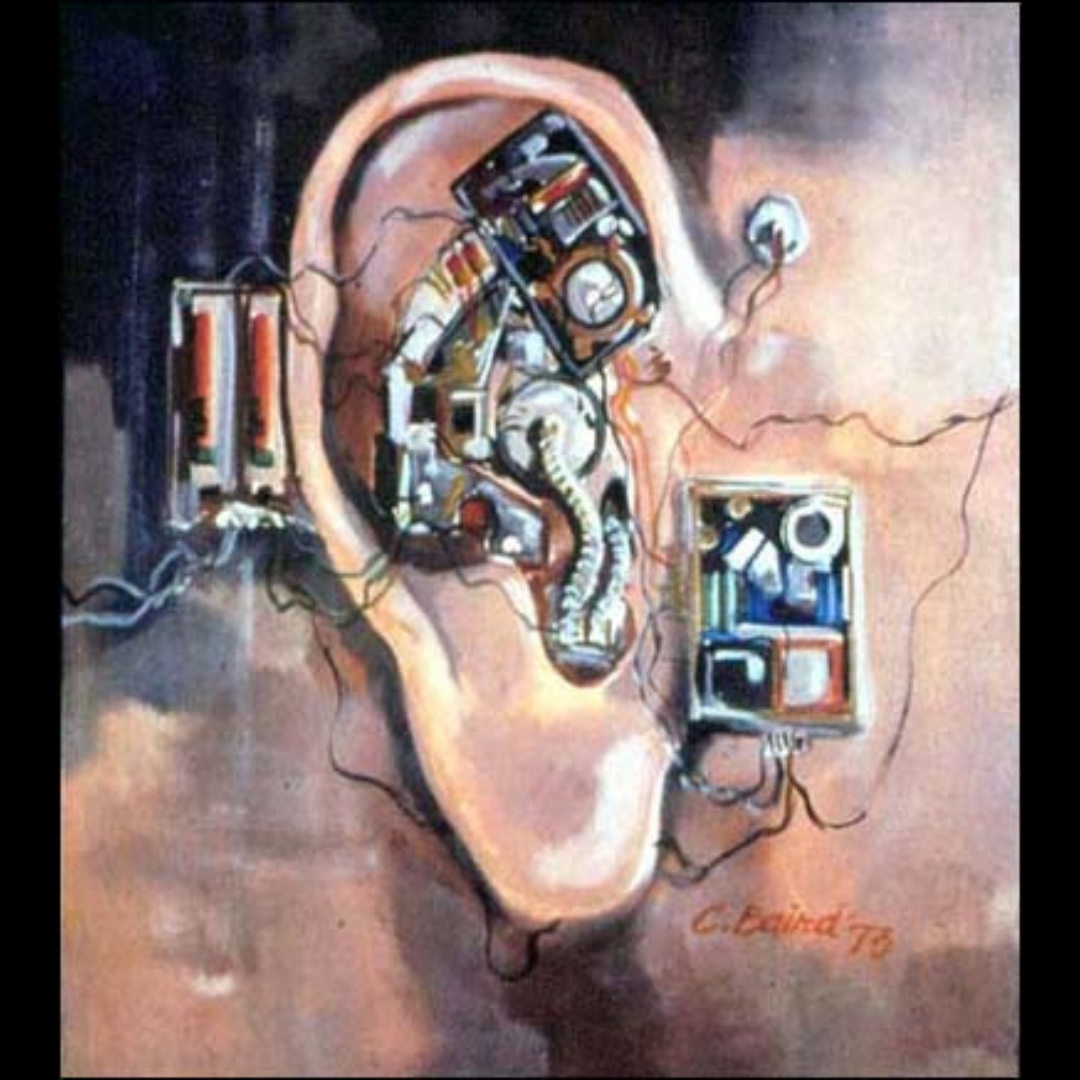Day 14. Painting Deaf Experiences The Art of Chuck Baird.

Bringing Deaf Culture to Life Through Visual Art
“Art is about communication. For me, painting is a way to tell the world that Deaf culture is rich, beautiful, and worth celebrating.” — Chuck Baird
Art has long been a powerful means of storytelling, and for Chuck Baird, it was a way to express the beauty of American Sign Language (ASL) and Deaf culture. As a pioneer of De’VIA (Deaf View / Image Art), Baird’s paintings capture the visual language, identity, and lived experiences of the Deaf community.
Who Was Chuck Baird?
Born Deaf in 1947 in Kansas City, Missouri, Baird discovered his love for art at a young age. He attended the Kansas School for the Deaf, where he honed his artistic skills before continuing his education at Gallaudet University and the National Technical Institute for the Deaf (NTID).
Throughout his career, Baird worked as a painter, actor, and set designer, but his most impactful work came in his unique visual storytelling of Deaf life and ASL.
The Birth of De’VIA: A Deaf Art Movement
🎨 What is De’VIA? De’VIA stands for Deaf View / Image Art, an artistic movement created by Deaf artists to express Deaf culture and identity.
In 1989, Baird joined a group of Deaf artists at the De’VIA Manifesto retreat, where they defined Deaf Art as a distinct genre. Unlike traditional art, De’VIA is focused on Deaf themes, perspectives, and sign language imagery.
The Power of Chuck Baird’s Paintings
Baird’s artwork is known for its bold colors, strong visual storytelling, and deep connection to ASL. His paintings often incorporate hands, faces, and signs to showcase the beauty of Deaf culture.
🔹 “The Mechanical Ear” – A painting critiquing society’s push for Deaf people to use hearing aids instead of embracing their Deaf identity.
🔹 “Sign Language” Series – A vibrant collection where Baird paints hands forming ASL signs, merging language and visual storytelling.
🔹 “Chuck’s Bilingual Hands” – A tribute to ASL and English, blending the two languages in a visually striking way.
Baird once said, “I enjoy creating images that show how sign language is a living, breathing part of our culture.” His work serves as both artistic expression and advocacy, educating the world about the richness of Deaf experiences.
Impact Beyond the Canvas
🔹 Set Designer & Actor: Baird worked in theater and film, including at the National Theatre of the Deaf, using visual storytelling to bring Deaf narratives to life.
🔹 Art Teacher & Mentor: He inspired Deaf youth to embrace their artistic talents, teaching at Deaf schools across the U.S.
🔹 Deaf Culture Advocate: His work challenged stereotypes about Deaf people, celebrating Deaf pride and identity.
Even after his passing in 2012, Baird’s legacy continues to inspire artists, activists, and educators in the Deaf community.
How to Explore & Support Deaf Artists
🖼 Visit Deaf Art Galleries – Support De’VIA artists and explore Deaf-centric exhibits.
📚 Read About De’VIA – “De’VIA: Deaf Art and Culture” provides insights into Deaf artists and their work.
🎭 Engage with Deaf Arts Organizations – Groups like Deaf Spotlight promote Deaf artists and cultural events.
🖌 Encourage Deaf Youth to Create – Art programs for Deaf children foster self-expression and pride in their identity.
Resources to Explore
📖 Books & Articles
📚 Chuck Baird: Deaf Culture in Art – A collection of his artwork and impact.
📖 De’VIA: Deaf View/Image Art – Understanding the movement Chuck Baird helped create.
🎨 Online Galleries & Exhibits
🖼 Chuck Baird’s Art Collection
🖼 De’VIA Online Exhibit
🎥 Videos & Documentaries
▶️ De’VIA: A Deaf Art Movement
▶️ The Life & Legacy of Chuck Baird
Reflection
Chuck Baird transformed the Deaf experience into a visual language that speaks to everyone—his paintings are a celebration, a challenge, and an invitation to see the world through Deaf eyes. De’VIA presents an opportunity to bring inclusion into the arts in a brand new way.
💬 What does Deaf representation in art mean to you?
💬 How can De’VIA’s work inspire other new forms of expression and opportunities for inclusion?
Deaf culture has often utilized art to raise awareness and to advocate for inclusion. We’ll next explore the way Deaf stories are shared as a form of advocacy in film.
Learn more: Build your knowledge of De’VIA by exploring the resources available from the Museum of Deaf History, Arts and Culture.
#UU #UUA #CelebrateDiversity #DeafCulture #DeafHistoryMonth #DisabilityAwareness #DeVIAArt #SignLanguageInArt #ChuckBaird
Discover more from SepulvedaUU
Subscribe to get the latest posts sent to your email.
